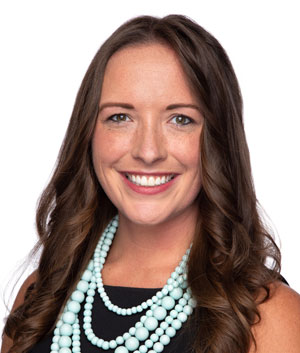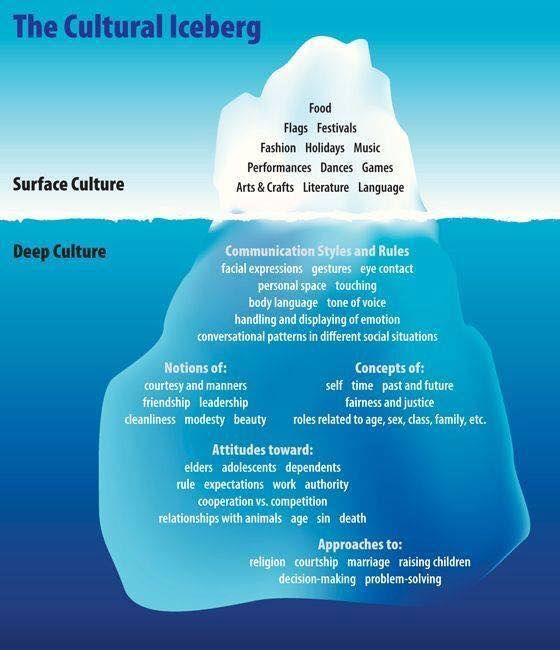Building Deeper Connections in the Classroom
 In my first year of teaching, I taught a kindergarten class of eighteen students. If someone asked me about my class I’d first tell them about the small class size, then I’d share that twelve of the children were boys and eight were girls. Most of the time the questions stopped there, and I’d often hear a comment like “oh you must have your hands full with all those boys. A lot of rough play huh?” If our conversation continued, the next question would often be, “do you like your students?” And for the person who wanted confirmation of where I worked, they would ask “what race are your students?” These questions only scratched the surface of who my students were and as I reflect, were often asked as a means to confirm a person’s biases. As a young teacher, eager to alter perceptions about my students, I would often comment that I had some of the most intelligent students I had ever interacted with and would share special, small moments I experienced with each child. These conversations would usually end, and there were missed opportunities for others to more deeply understand my students. I’ve come to learn that it is not the questions that were asked but my own surface-level understanding of my students’ cultures that stopped those conversations.
In my first year of teaching, I taught a kindergarten class of eighteen students. If someone asked me about my class I’d first tell them about the small class size, then I’d share that twelve of the children were boys and eight were girls. Most of the time the questions stopped there, and I’d often hear a comment like “oh you must have your hands full with all those boys. A lot of rough play huh?” If our conversation continued, the next question would often be, “do you like your students?” And for the person who wanted confirmation of where I worked, they would ask “what race are your students?” These questions only scratched the surface of who my students were and as I reflect, were often asked as a means to confirm a person’s biases. As a young teacher, eager to alter perceptions about my students, I would often comment that I had some of the most intelligent students I had ever interacted with and would share special, small moments I experienced with each child. These conversations would usually end, and there were missed opportunities for others to more deeply understand my students. I’ve come to learn that it is not the questions that were asked but my own surface-level understanding of my students’ cultures that stopped those conversations.
I often ask myself, why are we surface-level thinkers? Why must we categorize ourselves and others by sex, age, race, language, and ethnicity? I don’t have the answers to these questions but I do know the impact of them. When school administrators first create homeroom classes, they often work to balance the classes by gender, special education mandates, and academic levels. Then, the administration works to support and foster existing positive relationships between students and between students and their future teachers. Another layer administrators speak about is race when creating class rosters. It is often assumed that if a team conducts a thorough set of these discussions, the result is a more balanced community that is representative of the student population. But is that assumption really true?
As educators, class creation at our schools is a process we either have a say in or we don’t. We do however have the choice and professional responsibility to ensure our classrooms do not stop at the tip of the iceberg, but rather go deeper in understanding each child. One of my favorite images to discuss the importance of understanding our students’ commonalities and differences is the image below.

I think I can predict what you’re thinking, “The tip of the iceberg sounds a lot like my school’s “Multicultural Day.” Celebrating our students’ cultures through food, holidays, music, performances, and language is a great thing and it definitely shouldn’t stop. We know that this is how people express pride in their culture and that one day is not enough. To ensure we are creating classrooms where everyone is seen, heard, and respected, we must bring students’ cultures and experiences into our daily practices and instruction. We need to bring awareness to how our biases show up in our classroom contracts, our systems and routines, and how we communicate with our students. I’ve engaged in a process of continuous, critical self-reflection on my own biases as a white, female educator, and have engaged with several of the strategies and questions below that have helped me to build a classroom culture that celebrates and accepts all cultures every moment of every day.
- Classroom Environment:
-
- Create a student-centered classroom
- In your lesson plans, plan for multiple opportunities for students to speak more by showing what they know in a manner that is more important to them throughout your lesson plan.
- Collaborative Classroom Contract vs. Classroom Rules
- Plan a contract with students of what behaviors will be accepted to ensure everyone is seen, heard, and respected.
- Utilize scenarios to develop discussions around rules and behaviors that are accepted in the classroom.
- I.e. Post the statement, “Only the teacher can give students consequences.” Ask students to agree/disagree, ask why they agree/disagree, and if this statement supports productive learning in the classroom.
- Survey the environment of the classroom
- Analyze and build awareness of what the images, language, literature, and resources posted throughout the classroom messages to your students. Make sure the environment reflects the students in the classroom.
- Create a student-centered classroom
-
- Self Awareness First, Social Awareness Second
- Students and educators need to understand, accept, and love themselves before they can accept others’ differences. Plan activities to share individual differences and ways to celebrate diversity.
- The below idea is an Art activity for students to represent their culture on a deeper level that comes from a fellow educator, Soroya Smith, a Diversity Equity and Inclusion Learning Experience Designer who stated, “The more we learn about our students the less we operate on assumptions. One of my favorite ways to illustrate the culture beyond what’s visible is through identity portraits. We have a conversation about how there is WAY more to us than what others can see!" - Twitter Handle: @SoroyaSmithMEd
- Students and educators need to understand, accept, and love themselves before they can accept others’ differences. Plan activities to share individual differences and ways to celebrate diversity.
- Self Awareness First, Social Awareness Second

-
-
- Continuously ask yourself these questions during reflection:
- How does my identity impact the way I teach?
- What are my goals for classroom culture?
- What message do these goals send to my students?
- Continuously ask yourself these questions during reflection:
-
- Classroom Communication:
-
- Social Emotional Learning (expressing emotions vs. policing them)
- Give students a physical space to manage their emotions and the necessary time for them to express how they feel.
- Don’t have students evaluate their ability to manage emotions through an EQ style assessment, rather instead practice and celebrate the skills being developed. See here, how I use the mood meter to support my students in building their self-awareness.
- Ask students how they express emotions at home with their families. Is that the same or different than in the classroom?
- As an educator, ask yourself what can I do to understand these differences when they arise?
- Social Emotional Learning (expressing emotions vs. policing them)
-
- Acceptance vs. Tolerance
- Use Restorative Practices in the classroom. Restorative practice is about building community and using authentic dialog when responding to challenging behavior in an effort to “make things right.”
- I.E. Restorative Circles (check out this helpful resource I’ve used in my classroom, “Teaching Restorative Practices with Restorative Circles” created by Amos Clifford, Center for Restorative Process)
- Use Restorative Practices in the classroom. Restorative practice is about building community and using authentic dialog when responding to challenging behavior in an effort to “make things right.”
- Acceptance vs. Tolerance
- Family Communication:
-
- Embrace students’ home languages and families
- To be bilingual is an asset for our students
- Observing and celebrating when students feel comfortable to speak to others in their home language, this is evidence of a culturally responsive classroom
- Invite students’ families to speak about their experiences in their homeland. Plan for these opportunities to bring relevance to your instruction.
- Embrace students’ home languages and families
-
- Pronounce students’ names correctly
- Practice how to pronounce a student’s name rather than having them create a new name because their new community can’t pronounce it. Names are linked to self identity.
- Pronounce students’ names correctly
I hope the reflection questions and concrete examples listed above support you in really getting to know your students' cultural backgrounds. I’d love to hear your thoughts and reflections on how we can build deeper connections with all of our students. Connect with me via Twitter: @CarolynHanser or email: carolynhanser@linclearning.com.